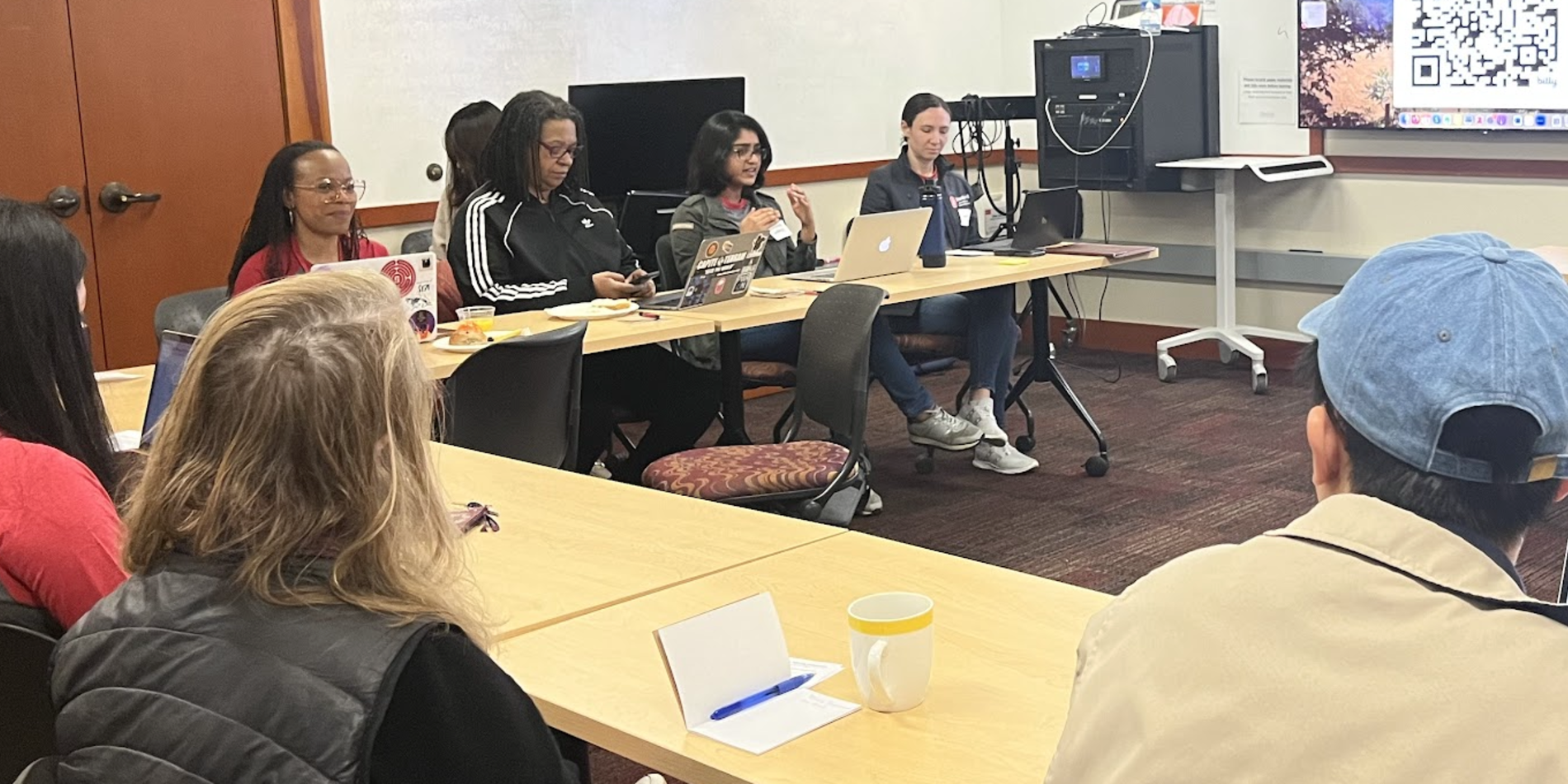By Shannon Hervey
Stanford’s chapter of the Prison Renaissance Project hosted their zine launch for their second issue on Thursday, May 30th at the Black Community Center on Stanford’s campus. What started in fall of 2017 with eager artists reaching across boundaries both real and imagined, the Stanford chapter of the Prison Renaissance Project has continued on through almost two academic years of meaningful collaboration and insightful social justice work. The collaboration continues to produce poignant art that centralizes the importance of proximity and shared experience to upend alienating stereotypes which reinforce our society’s dehumanizing practices of incarceration. (To read a recap of the chapter’s beginnings, see this Stanford Daily piece from Sept. 2017 or this PWR Newsletter piece from Nov. 2017.)
Back in 2017, incarcerated artists Rahsaan Thomas, Juan Meza, and Emile DeWeaver were inspired by a speech given by Bryan Stevenson, founder of the Equal Justice Initiative, who argued that social justice workers must “get proximate with suffering.” Art is an especially provocative method of moving closer to the lived experiences of marginalized individuals, especially when the collaboration and the projects are led by and comprised of voices that have been systematically excluded. The power of art to transcend these “systems of exclusion” is discussed in a recent conversation between an incarcerated artist, Mesro Coles-El and a Stanford student involved with the project. During this conversation, art is hailed as a method of unearthing, transforming, communicating, and practicing justice. Mesro says that the Prison Renaissance project gives him a sense of belonging; Ruminating on the word “Renaissance,” he says that it is really “all about elevating and changing thinking.” He goes on to say the following:
“To be able to produce art rather than whatever it is they might expect from us, which is mostly the stereotype that we are in here killing and raping each other—we’re just numbers in a ledger for a lot of people. It’s good to be able to put a human face on what some would call the “lowest-of-the-low.” I think some of the best art comes out of prisons because more people have time to sit and work with their art and really work with the messages they’re trying to send to the world. And Prison Renaissance allows that to happen.”
When the Prison Renaissance Project started on Stanford campus in 2017, undergraduates Netta Wang and Michelle Chang proposed the idea of a Zine as a platform for this collaboration. Although the collaboration produced a variety of art, including wood sculptures and performance pieces, Chang says that they ultimately decided on a zine project because, “zines have a rich sociocultural history with movement building and generation – a way to disseminate a message effectively and widely. … [They] best encompass the do-it-yourself-with-others spirit behind our project.” Together with Coles-El, Wang and Chang currently run the Zine project under the direction of PWR lecturer, Selby Schwartz, and Emile DeWeaver, one of the three co-founders of the Prison Renaissance Project. DeWeaver's art is featured in both issues of Incarceratedly Yours.
Brigitte Pawliw-Fry’s editorial written for The Stanford Arts Review discusses the launch of the second issue of the zine and the labor that went into producing this excellent collaboration that required “[c]ommunicating through letters and over the phone” until “the artists had miraculously built a collaborative project across the walls of San Quentin State Prison.” At the May 30 launch of the second issue, attended by over a hundred people, artist pairs (such as Vince Pane and Emile DeWeaver, pictured above) spoke together about their process, what it meant to them to collaborate, and how they made the artworks. Incarcerated artists called in during the event, and images of their artworks were shown as they spoke. Chang, Wang, and the 22-person team of Stanford students they brought together for this issue of the zine project had also done installations of the work: sculptures were mounted so that they could be seen three-dimensionally, poems were magnified and framed on the walls. Those who came to the event could also listen to recordings of the incarcerated artists talking about their work and could write postcards to the artists. The entire evening was wonderful tribute to the work that has gone into this project.
The Prison Renaissance project at Stanford is supported by a PWR Research Award, which has helped fund honoraria for the incarcerated artists as well as printing and other associated costs. PWR faculty can find the most recent and past issues of the Incarceratedly Yours in the Sweet Hall third floor lobby.
View this exceptional project online.
You can also view the materials from the first issue of the zine project, archived through the Stanford Library.



